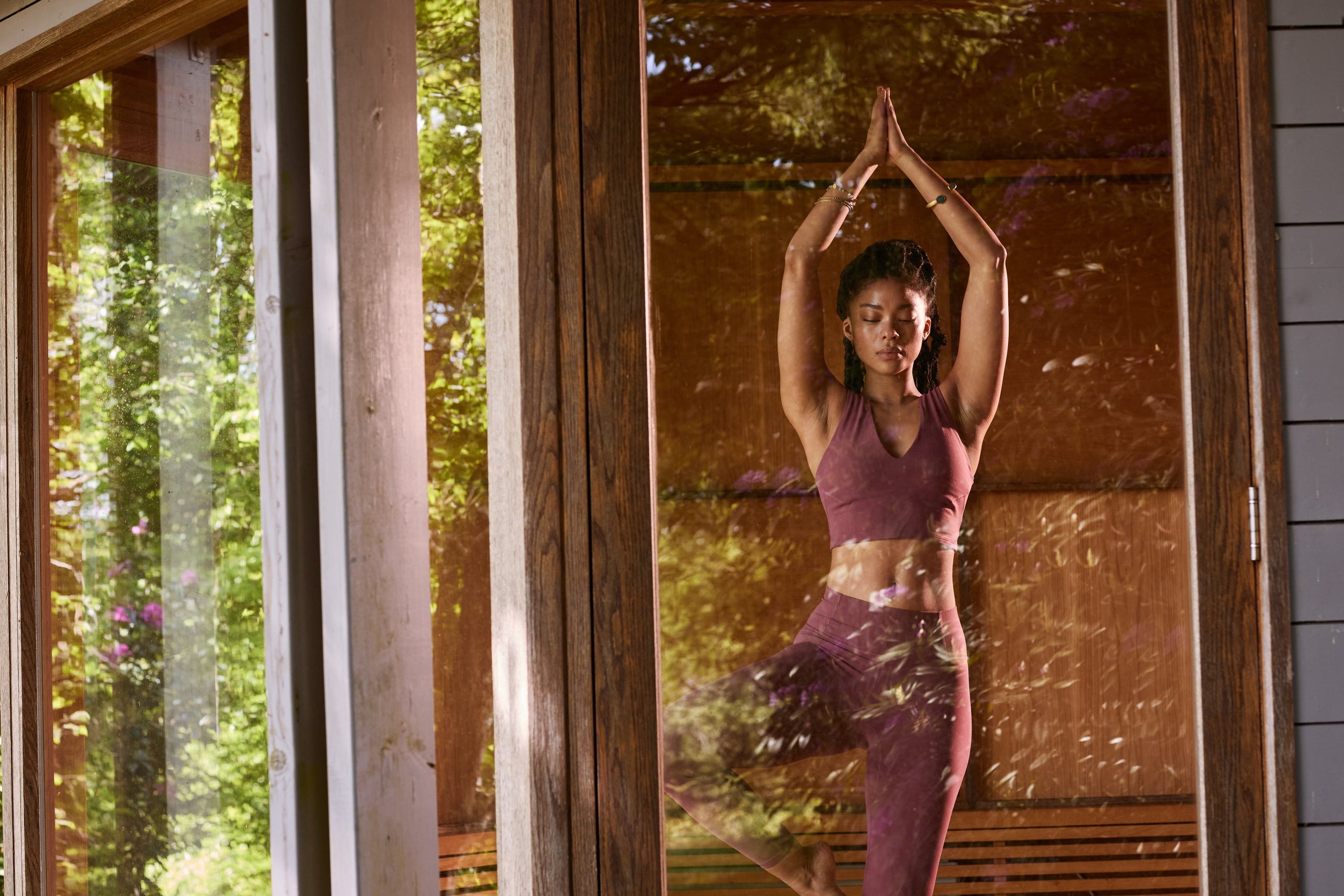
This is what exercise looks like: fitness reimagined – for real life
4 Min read

Life got… full, fast.
Our modern world can feel like a lot. Complex wellness protocols, morning routines that take… hours. Home-cooked everything, living with passion, working smart, being present parents and loving partners, protecting the planet, keeping up friendships – and in between, we’re supposed to regulate our nervous systems and stay active in social causes. Oh, and ideally fit in four workouts a week too.
Movement undeniably brings benefits – especially when we’re trying to navigate the stress of modern life. But as wellness culture grows and perfectly curated fitness content floods our feeds, it can all feel… unattainable. Motivating for some – but discouraging for many.
Because real life rarely offers perfect lighting, a home gym, or a free hour. When you’re being pulled in every direction, the question becomes:
Can we look at movement differently – more realistically, and in a way that fits our everyday lives?
We are made to move
When things feel overwhelming, sometimes the best remedy is to zoom out and simplify. From an evolutionary perspective, one thing is clear: we are designed to move.
Our ancestors walked for miles each day – gathering, hunting, or seeking shelter. They crouched to cook, carried children and firewood, climbed, dug, lifted and built. Movement wasn’t a workout – it was essential to survival. And just as they moved with purpose, they also rested with purpose – in tune with the rhythms of the natural world.
Dan Buettner’s research on the world’s longest-living communities – the so-called Blue Zones – shows that this kind of functional, everyday movement is one of the most powerful predictors of health and longevity.
These days, we live in a world that often discourages movement – or outright prevents it. Cars, trains, offices, comfy sofas… It's never been easier to stay still. Recent studies show adults now sit for over 9 hours a day – far from what our bodies are built for.
The irony? We now build entire gyms and training plans to replicate what used to be just… life. And while we love a great workout (Hyrox, yoga, Pilates, strength training – yes please), it’s worth remembering:
Movement isn’t just about training. Movement is life.
Why all movement matters – in every dose
Consistent movement supports nearly every system in the body:
-
Cardiovascular health (heart disease is still the leading cause of death in women worldwide)
-
Lymphatic flow – vital for detox and immunity
-
Muscle and bone health – foundational for metabolism and long-term strength
-
Mental health, mood regulation and better sleep – essential on full, busy days
-
Stronger immunity and improved cognitive performance
Even short bursts – like a 5-minute post-meal walk – can help balance blood sugar and ease pressure on the heart. One study found that just 11 minutes of brisk walking a day can lower your risk of early death by up to 25%.
The best part? Movement doesn’t need to be perfect. It just needs to happen – regularly, imperfectly, right in the middle of your real life.
Think: messy bun, no makeup, dancing while you cook pasta, chasing the kids in the garden, mini dance breaks at your standing desk, phone call strolls or power cleaning with headphones and a great playlist. Not glamorous. Not Instagrammable. But effective, nurturing and full of quiet joy.
If movement always relies on perfect conditions – time, energy, childcare, good weather – it becomes hard to maintain. What helps:
Lowering the barrier between you and your next movement moment.
That way, you're more likely to say yes – to movement that works with your life.
Your studio? Wherever you are right now.
Everything counts. And everything moves.

Redefine fitness – on your terms
Let’s be honest: nothing beats that post-workout feeling. And targeted training absolutely has its place. The research is clear – higher intensity and consistency deliver strong benefits for heart health, metabolism, cognitive performance and longevity. For women especially, strength training is key – for bone health, hormonal balance and resilience through perimenopause and beyond.
But what’s often missing is context – and your unique rhythm.
Because pushing harder isn’t always the bravest choice.
If you’re dragging yourself to a workout feeling drained – out of guilt or pressure – it might be time for an honest check-in:
Is this actually serving me – or just depleting me?
There’s a big difference between movement that strengthens you and movement that exhausts you. Fitness shouldn’t be another way to measure your worth – it should be a tool that supports your life. Something that gives you energy, not takes it away.
The real magic? Showing up. Again and again. In whatever way works for you.
Fitness – redefined. By you.
This isn’t a call to “lower your standards”. It’s an invitation to expand your definition of movement.
What matters isn’t what it looks like – it’s whether it supports you. Whether it strengthens your body, clears your mind and helps you feel alive. It should feel like a celebration of your capacity – not another chore on your list.
This is movement: imperfect, intuitive, and entirely your own.



